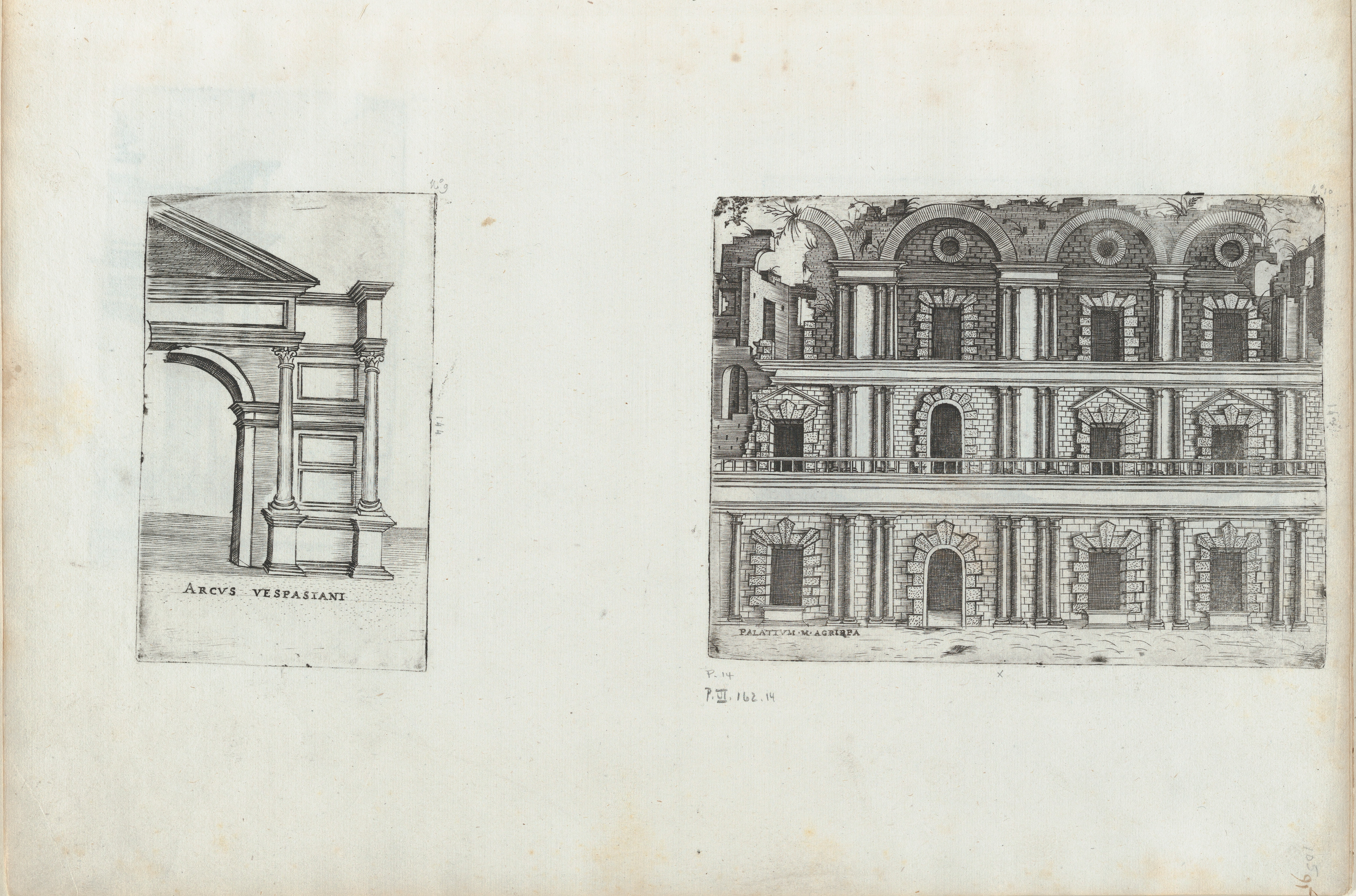Palatium M. Agrippa, from a Series of Prints depicting (reconstructed) Buildings from Roman Antiquity
Formerly attributed to Monogrammist G.A. & the Caltrop Italian
Not on view
Frontal view of the façade of the palace of Emperor Marcus Agrippa, as indicated by the inscription ‘Palatium M. Agrippa’ in the lower left corner. The rusticated façade consists of three stories crowned by an attica with arches and small round windows. The façade is divided in four bays each with a window or door open to the exterior. Double Doric pillars flank the windows. Along the sides and top of the building damage is visible. It is not clear whether this rendition is based on a specific building in Rome, or whether the printmaker is relying on his imagination, based on a description of the palace in an historic source.
The print is part of a group of architectural prints depicting buildings from Roman Antiquity, ranging from triumphal arches to bath houses, temples and palaces in Italy, France and Spain. Some of the buildings have been artificially reconstructed based on Medieval descriptions, while others are depicted in their ruinous states. The plates are known in several (uncatalogued) states, and have undergone minor changes over time. Several titles of buildings have been changed, and the plates have been cropped as a result of plate cracks and oxidation.
Most copper plates for this series have been engraved on both sides. This print, however, does not match any of the other prints in size. Its verso may contain a composition for a different subject.
This group of prints was purchased as part of an an album in 1926, but taken apart by the Museum in 1934. The album appears to have been compiled in the 17th century, although the majority of prints date from the 16th century. The larger part of the prints is focused on mythological subjects and objects and architecture from Antiquity. The album was part of the collection of the architect Hippolyte Destailleur and was sold in the sale of his books and prints in 1895. The Museum acquired the album at G. Rapilly & Fils in 1926. Where the album had been kept in the mean time is unclear and several prints were taken out in this period. The museum's numbering does not reflect the order of the original album, but Destailleur's numbering system is retained on the inidividual sheets, allowing for the reconstruction of its original content.
Due to rights restrictions, this image cannot be enlarged, viewed at full screen, or downloaded.
This artwork is meant to be viewed from right to left. Scroll left to view more.




